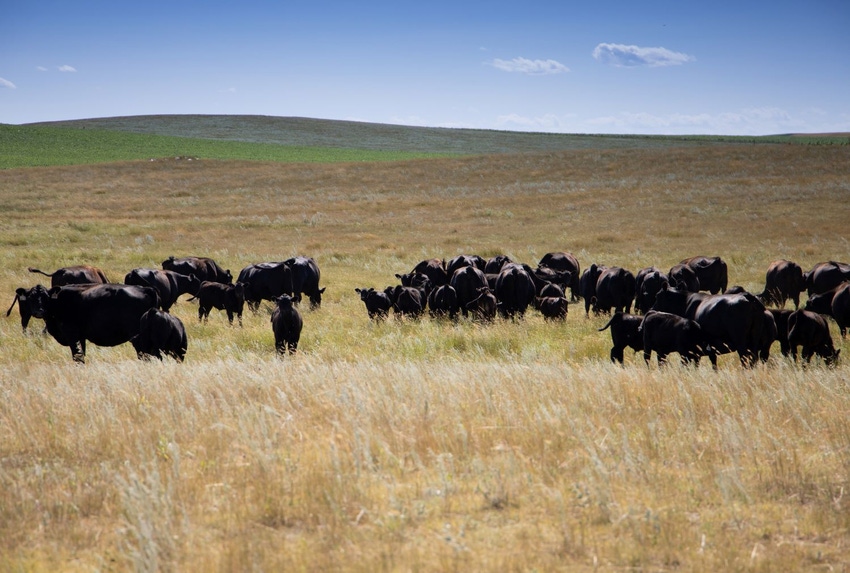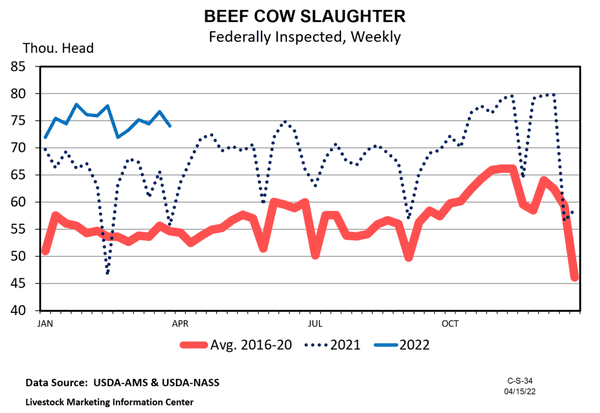April 20, 2022

The size of the US beef cow herd was estimated to have decreased by 2.3% during 2021. Steep culling of the cowherd was a major reason why this was the case as beef cow slaughter was up by nearly 9% for the year. A frustrating calf market and drought in much of the US led to herd reductions as a lot of cows were sent to market. Year-over-year, the increase amounted to almost 300 thousand cows, which probably accounted for about 40% of the reduction in beef cow numbers last year.

While calf prices have been higher in the first three months of 2022, a large portion of the US remains in significant drought. Most significantly for the cattle sector, drought moved into the Southern Plains during the fall of 2021 and has seemed to intensify over the last several months. The chart above shows beef cow slaughter for 2022 (blue line), which has been running well ahead of 2021 (dotted line). Year-to-date, beef cow slaughter has been over 17% higher than year-ago through the end of March. This is slightly biased by an extremely low cow slaughter week in February 2021, which was the result of a significant ice storm. However, even taking that week out of the comparison, harvest levels are still more than 14% higher so far this year.
While drought conditions are likely the major driver behind current cow slaughter levels, price levels are adding fuel to the fire. The chart below shows slaughter cow prices in the Southern Plains, which have been running much higher than last year. For the first week in April, slaughter cow prices were almost 35% higher than the same week in 2021. The same has generally been true for cull cow markets in the Southeast and I am including a cull cow price chart for Kentucky as well.

Beef heifer retention was lower coming into 2022, which suggests continued contraction in beef cow numbers. It is still early in the year, but beef cow slaughter through the end of March points to another year of heavy culling. The combination of dry weather and strong cull cow prices are likely to keep cows moving and encourage producers to pull the trigger a little sooner on those cows as they approach the end of their productive lives. This is definitely something to watch as we move through the current year and it is hard to imagine that we won’t be discussing another decrease in beef cow numbers at the start of 2023.

Source: University of Kentucky, which is solely responsible for the information provided and is wholly owned by the source. Informa Business Media and all its subsidiaries are not responsible for any of the content contained in this information asset.
You May Also Like




